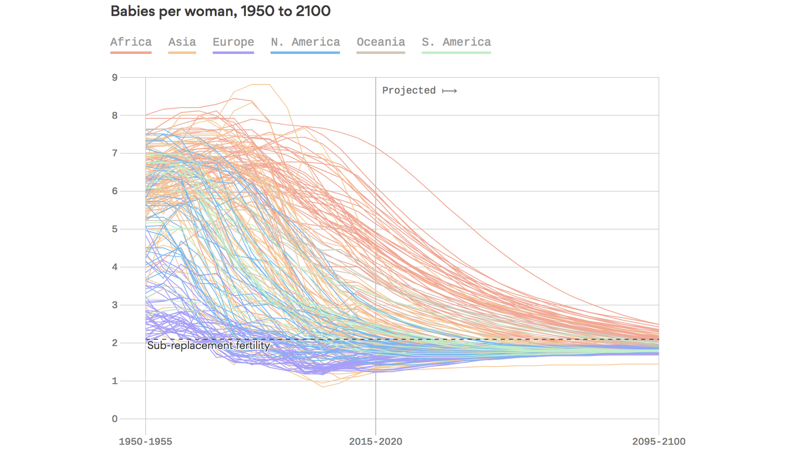More on what I previously posted about.

Since the dawn of humans, we have faced one inexorable challenge — how to support the rise and — in the last half century or so — explosion of the population. But, in a momentous reversal, that age-old challenge is changing: the population of most countries is shrinking — for many of them at an alarming pace — and at the same time aging.
Much of the world teeters on the cusp of a childless, elderly future.
Why it matters: A growing, youthful population is typically a bedrock sign of vitality. In the industrial age, that’s included a growing economy, greater opportunity, advancing technology, and a more comfortable retirement for older people. The turnaround on all continents except Africa means supporting an increasing number of retired people with many fewer workers, and confronts the world with two primary solutions, both of them controversial.
- Loosen up currently fraught politics around migration from still-growing countries.
- Or populate our countries with robot helpers.
Whichever the case, almost no one seems prepared. People are going to have to work longer, experts say. And the U.S. requires “major reforms” in its programs for the elderly, says Richard Cincotta, director of the Global Political Demography Program at the Stimson Center, and formerly a lead demographer for the U.S. intelligence community. But the government “seems to be nowhere near making the social security reforms that are needed.”
- Largely because of Africa, the global population is forecast to continue rising through the century past 11 billion. But according to the United Nations, there is a 23% chance the world population will stabilize or fall by then in a phenomenon that some demographers call“peak human.”